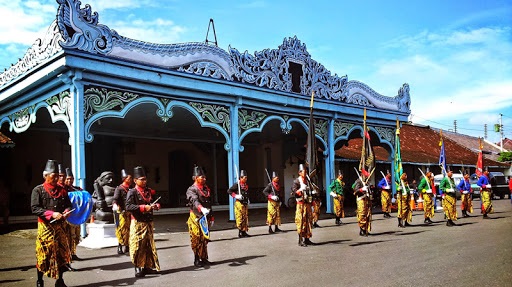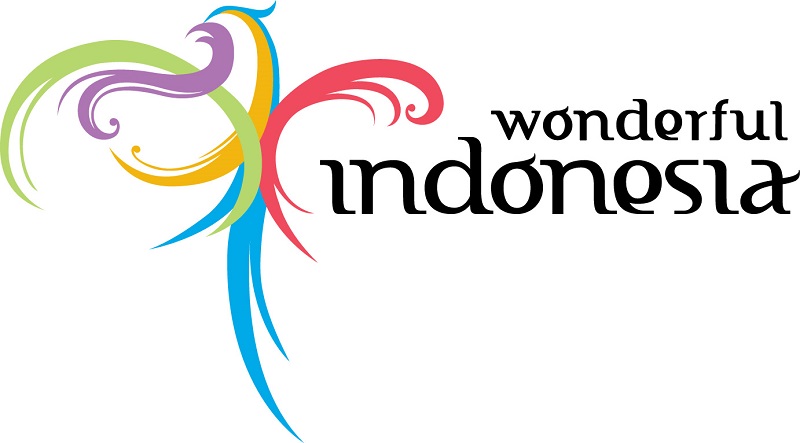
Solo is a significant centre of heritage and Javanese culture since its establishment as the core of the Mataram kingdom in 1745. Solo is called Surakarta — includes an intriguing assortment of items to see such as the century Puri Mangkunegaran palace, temples, museums and cultural dancing displays and performances, even conservative and diminished than Yogyakarta.
Presently a significant textile centre, Solo is the place to pick up some of Indonesia’s most exceptional batik fabrics and regional crafts. Solo is also a starting point for exploring the countryside of Central Java, a mountainous region with a varied and vibrant landscape. Many locations across the city offer excellent views of the volcano, Mount Merapi.
The Borobudur and Prambanan temples can be easily visited on a day excursion. Road and rail links offer easy accessibility around Java to Semarang, Yogyakarta and several other cities.
Solo Attractions
The rich history as the centre of the ancient kingdom of Solo remains on screen in a number of its famed architectural sites. The Kraton Surakarta is your palace for Solo’s very first king Pakubuwono II, who established his mansion in 1745. Nearly ruined in a fire the castle has been restored and some attributes including the Panggung Songgo Buwono tower have retained their glory.
The next principal palace Puri Mangkunegaran, founded by the descendants of Pakubuwono II in 1757 of Solo, includes a mix of style and Javanese, with a beautiful ceiling decorated with colourful figures of constellations. Its museum has an outstanding group of artefacts, including jewellery masks and dancing costumes.
Mesjid Agung mosque is one of the most prestigious places of worship using a classical Javanese layout of Solo. Meanwhile, the contemporary Hindu temple Sahasra Adhi Pura has on display versions of some 50 structures that are important as a centre for Kundalini yoga and from around the globe.
Some museums worth visiting include Danar Hadi for batik displays, the Radya Pustaka Museum for traditional performance items such as puppets and gamelan instruments, along with Dullah museum and art gallery featuring the works of the acclaimed painter Dullah.
Solo Dining & Restaurants
Solo’s dining landscape is distinct from street life, in which a lot of the many yummy dishes of the city are served new from restaurants that are casual along with food stalls.
Solo’s most common street-food foods include nasi gudeg (hot fried chicken with jackfruit and corn), nasi liwet (rice with coconut milk, garlic, and papaya), bakso solo (meatballs) and timlo Solo (vegetable and beef noodle soup). The food lists are included by Good spots in Galabo or Solo Grand Restaurant, equally on Jalan Slamet Riyadi.
Also in the same street is Adem Ayem. The location is on a budget because of its reasonably priced fried or gudeg-style chicken dishes. For Western taste, try O Solo Mio restaurant with wood-fired pizzas and pasta. Not for its faint-hearted, Mas Mul restaurant on Jalan Veteran comes with an odd menu item: snake. Pick one out of a tank featuring a range of the writhing animals and ask for it to prepare as a stir-fry or a satay snack.
Solo Nightlife
Nightlife is low key to visit in the evening hours. Among the hottest, especially with young natives, is New Legenda club on Jalan Suryo Pranoto, with techno DJ music offering a mix of international tunes and dangdut Indonesian pop music. Intro pub at Solo Grand Theater on Jalan Slamet Riyadi features live music on weekends.
Those looking for a more exciting clubbing scene will need to go to Bali, Jakarta or Yogyakarta. In Solo, events which happen during the night are signs of cultural or spiritual significance, using the most renowned being the Garebeg Ceremony (also called Sekaten Ceremony).

Within this week-long festival, which falls between May and July every year, the principal activities include a parade along with percussion instrument performances, starting at midnight. The Kirab Pusaka festival, which takes place between March and May of Solo, has day processions. It was an annual event in Solo for nearly 400 decades.
A glimpse into customs is given at the Taman Budaya Surakarta centre, which includes nightly wayang puppet theatre shows.
Solo Shopping
As the main textile centre, Solo is a dream for people who love to purchase fabrics and clothing. Quite a few batiks and ikat (hand-woven dyed) fabrics have designs distinctive to Solo, and also can be found in the town’s many shops and markets. One of the best finds is at the Klewer Textile Market near Kraton Surakarta palace.
All around the palace are all street vendors and shops selling jewellery, gems, gold and souvenirs. Worth stopping, if only to watch artisans is Balai Agung about Jalan Kyai Gede Sala, where gamelan places and kulit puppets are manufactured and marketed. An eclectic mixture of antiques and curios could be discovered at the Triwindu Antiques Market near Mangkunegaran palace.
There are several shopping centres in Solo selling a vast range of groceries and products including Singosaren Plaza on Jalan Gatot Subroto, and Solo Grand Restaurant as well as Megaland, equally on Jalan Slamet Riyadi.
Solo Activities
With an outstanding mountain range across town, no trip to Solo is complete without doing some hiking. Guided tours could be organized even to increase up the holy Mount Lawu, that is dotted with Hindu temples, or to visit the Tawangmangu mountain hotel. The most striking of the temples up here would be the big Candi Cetho, built in style similar to temples, along with Candi Sukuh, which dates back to the 15th century. Visit Mount Merapi to get an exciting up-close look at an active volcano. A beautiful view of the city may be appreciated on a bike tour, including visits to local centres of batik, handicrafts and snack meals.
As a traditional meditation centre, Solo is the ideal place to add insight. For which may be located at the tourist office on Jalan Slamet Riyadi Quite a few meditation centres are located across the city, schedules and data. Even the Sriwedari Amusement Park offers some thrills and amusement for your family with its rides and cultural performances that are every day. Children will also enjoy camel rides and checking out the dinosaurs, dinosaurs and other creatures at the Jurug Zoo.
Solo Information
Solo is situated some 60 kilometres east of Yogyakarta, in Central Java. The town is well connected to the other cities in Indonesia with air, train and bus links. The Adi Sumarmo airport of Solo schedules frequent flights in from Jakarta on air carriers, in addition to from two international flights: daily flights on AirAsia from Kuala Lumpur, Malaysia, and thrice-weekly flights to and from Singapore on SilkAir. From the bus, numerous regular market bus trips are arriving at Solo’s Tirtonadi bus terminal. Here, there is business (mostly non-air-conditioned) bus service linking Solo to Yogyakarta, Semarang and Prambanan from Central Java, in addition to East Java destinations such as Surabaya and Malang.
Nearby is the Gilingan minibus terminal providing state assistance on suburban minibuses to and in the exact destinations. Solo is about the main train line which connects Jakarta, Yogyakarta and Surabaya, together with using business-class and state trips that are daily leaving and coming from the Balapan train station of Solo. Tickets to Jakarta and Surabaya could be ordered in Jebres rail station. However, this slow trip is only recommended if you have a great deal of time to spare.
Planning to visit Solo soon? Find out more about Solo and Indonesia by visiting Wonderful Indonesia.

